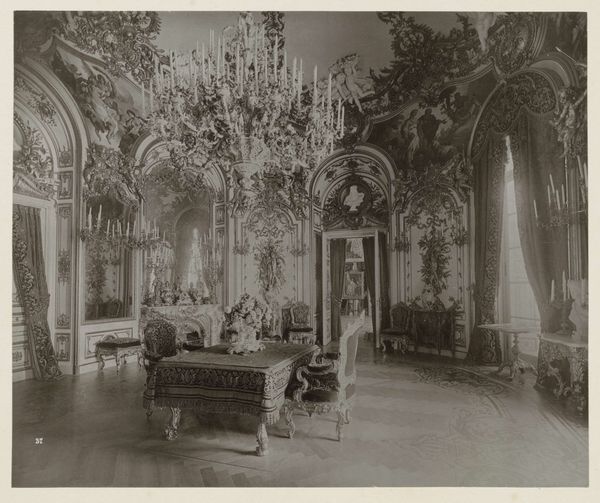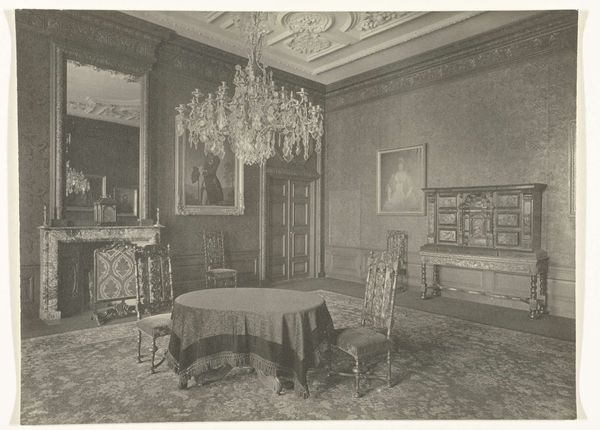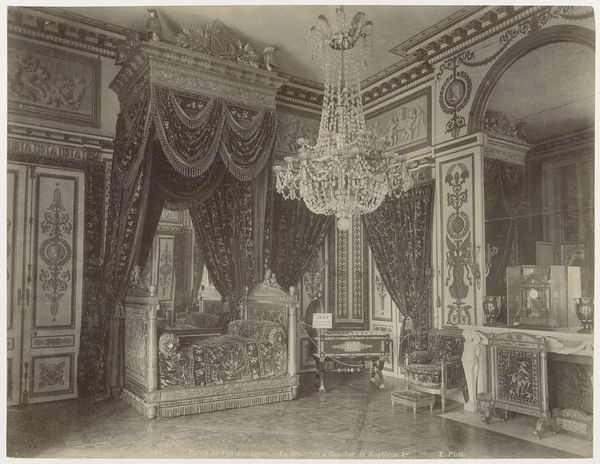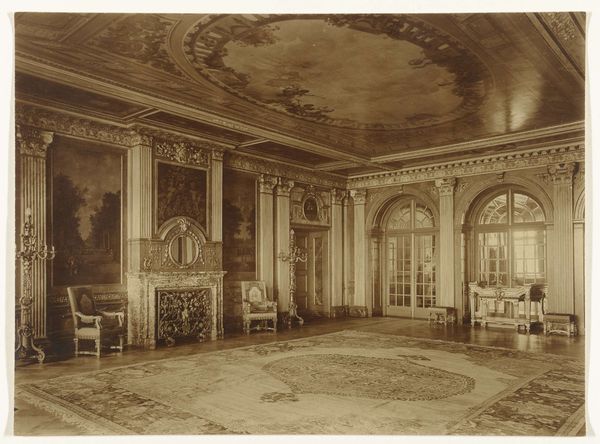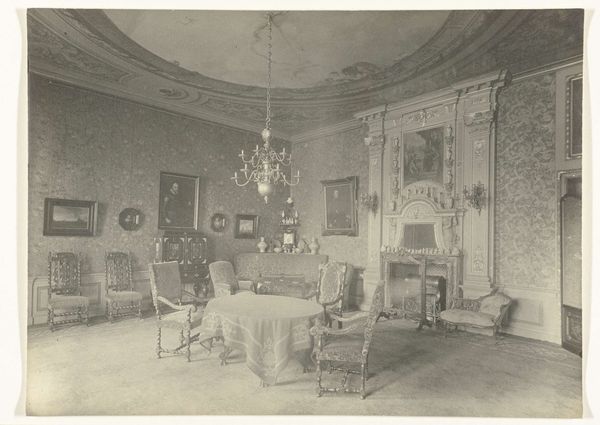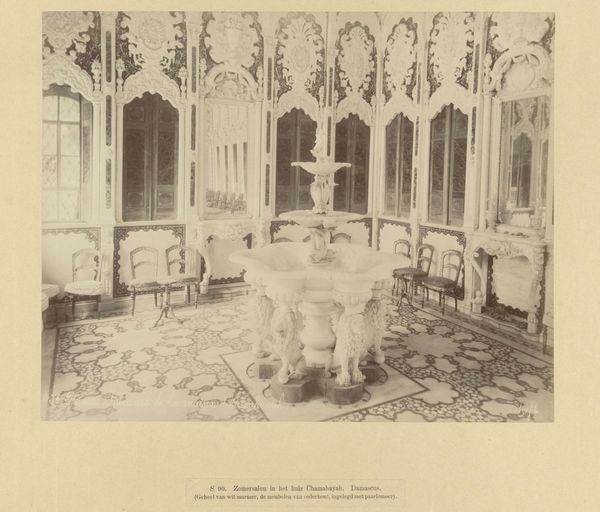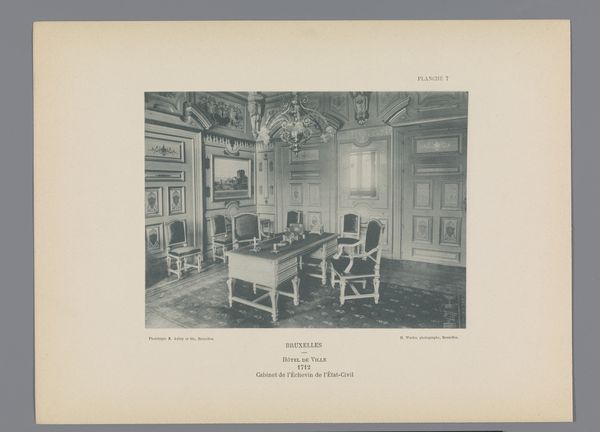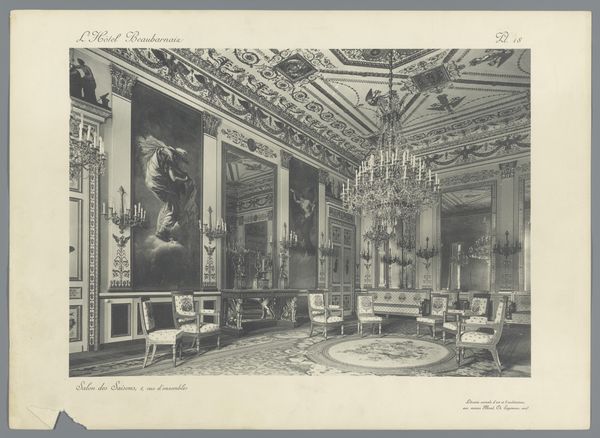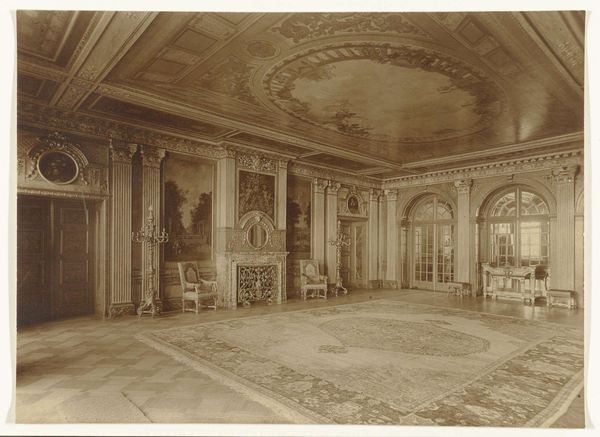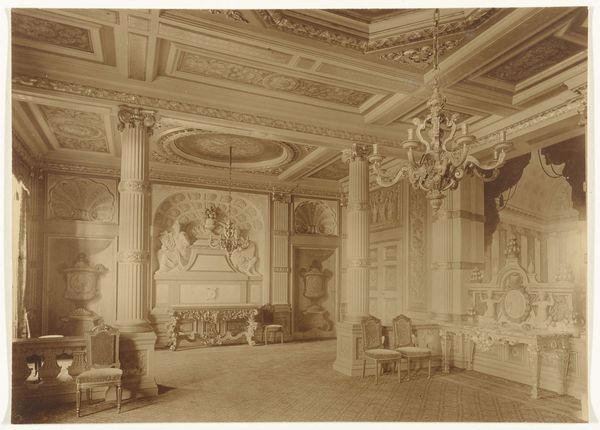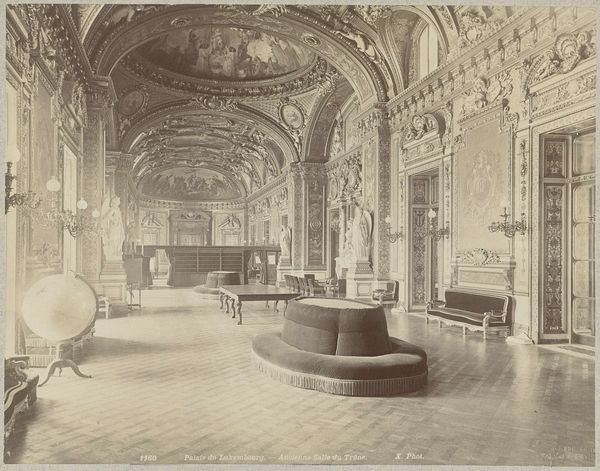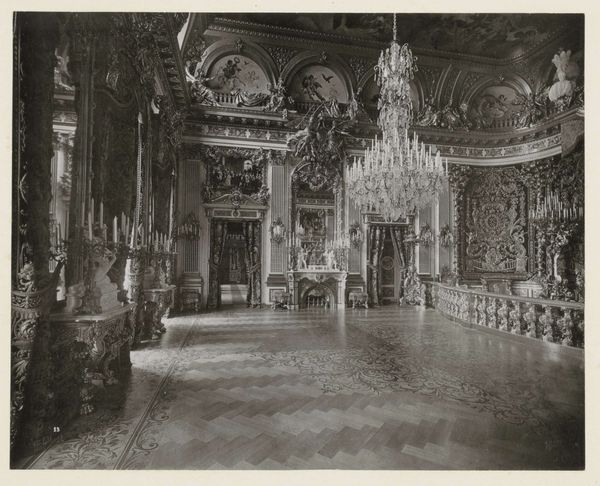
photography
#
landscape
#
photography
#
orientalism
#
19th century
Dimensions: height 220 mm, width 278 mm, height 467 mm, width 558 mm
Copyright: Rijks Museum: Open Domain
Curator: This is "Interior of the Chamahayah House, Damascus", a photograph by Félix Bonfils, dating from around 1867 to 1877. It gives us a glimpse into the domestic lives of a prominent family in Ottoman Syria during a time of intense colonial interest. Editor: Whoa, instant sense of almost overwhelming…ornateness. The filigree on the walls, the light fixture... it's like a lace doily manifested as a whole room. Claustrophobic but opulent. Curator: Indeed. The house itself likely belonged to a wealthy Damascene family, and Bonfils’ photography, fitting within the Orientalist style, circulated widely in Europe, shaping Western perceptions. These images served as visual evidence for colonial narratives about the region. Editor: Orientalism, yes, that whole package. The Western gaze presenting its romanticized—and sometimes, I'd argue, subtly mocking—version of "the East." It's all surface and shimmering reflection in those enormous mirrors. Does that chandelier ever get cleaned? I can't help thinking someone's life revolved around dusting this room. Curator: It is fascinating to consider how such images played a role in justifying colonial intervention. They created an image of a timeless, almost stagnant culture, needing guidance and civilization. Editor: Exactly! And this room, beautiful as it undeniably is, becomes almost a stage set in that colonial drama. All that intricate detail, like a beautiful trap. Were any locals involved in staging or assisting Bonfils in his work? Curator: To be honest, we can only speculate. Very little historical evidence allows us to confidently assess the exact contributions, creative or logistical, from local Damascenes on this body of work. But in later work Bonfils opened his own studio, giving further opportunities to local people to train in the art of photography. Editor: The silence in the room captured by Bonfils. Almost sepulchral and filled with whispers, I suspect. That silence in contrast to our current noisy century. Well, I certainly felt like I've walked away having thought about things from a slightly different perspective. Thank you. Curator: And thank you for offering such a thought-provoking take. By examining its historical roots and cultural baggage, hopefully people can enjoy a far richer appreciation for Bonfils' piece, its implications, and even its lingering beauty.
Comments
No comments
Be the first to comment and join the conversation on the ultimate creative platform.
